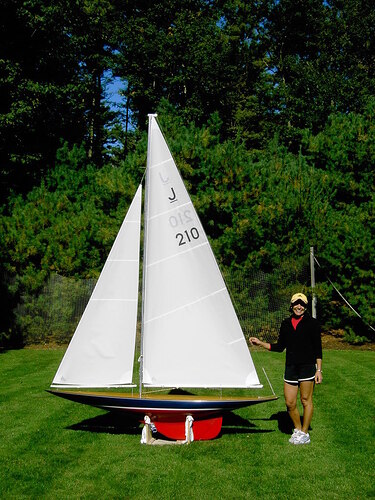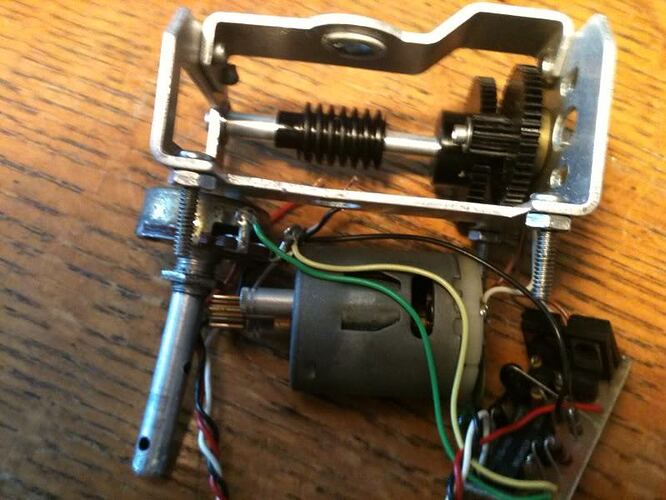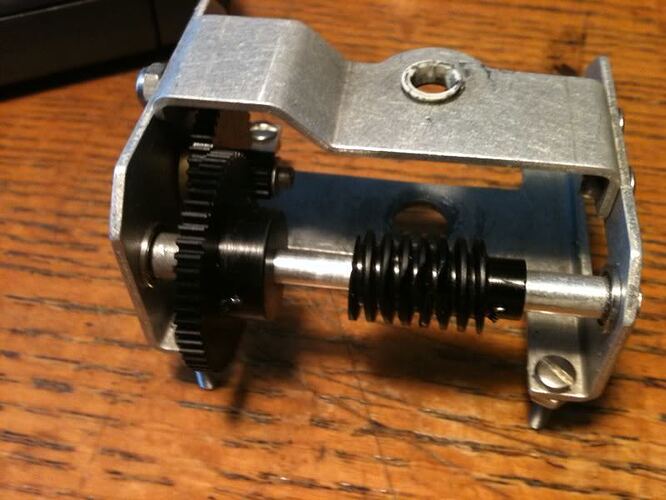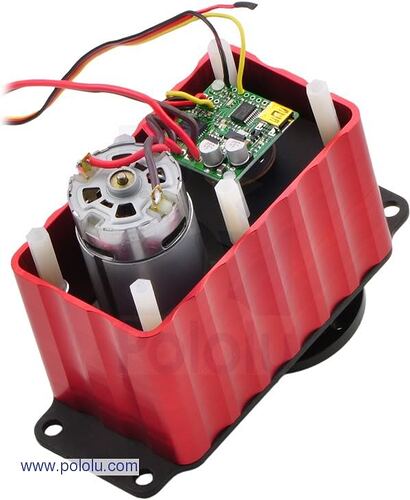I’m finally logged in! Great!LOL! ![]()
This is the greatest forum!
I am building an rc sail-winch for a 100" length Endeavor J-Boat.I’m reverse-engineering an old ProBar W-7 sail-winch.I’m planning on upgrading to a Hall’s Effect brushless 5K potentiometer on the final output worm-gear,and of course the old servo amp is analog,new will be digital.Can I use a Pololu single servo amplifier board or is this not produced in a single servo amp? Do I need a usb port servo amp for programming the sail-winch position?
Also,can I use a brush-less dc motor for the winch with the Pololu servo amp? The old-style winch has a 360/1 6volt Mabuchi dc motor that I am upgrading now.I can have a brush-less out-runner motor custom wound to match.
Regards,
John
Hello.
Nice boat! We do not have any controllers for brushless motors, so if you want to go that route, we cannot really help you. We have two brushed motor controllers for making your own servo:
pololu.com/catalog/product/1392
pololu.com/catalog/product/1393
With these, you can make your own big servo that you would set up over the USB connection but which you could then use like a regular RC servo. You can look at the Torxis giant servo for one example application of the Jrk motor controllers.
- Jan
I will stay with the DC brushed Mabuchi motor but it was using a very basic Futaba 7volt servo amp.The motor turns at a set speed and spins a geared transmission.Why should I use the model that you suggest? I was considering using this model :
Sail-winch transmission :
Regards,
John
Your first picture is of our old micro serial servo controller. If you want a serial servo controller, we recommend our newer Micro Maestro. However, I don’t think you are looking for a servo controller since you talked about using RC, in which case you have an RC receiver and you need to plug a servo into it. It sounds like you want to effectively make your own servo, for which you need a motor controller (you keep saying “amp”). Specifically, you want a motor controller that can read a feedback sensor such as a potentimeter to make a closed-loop position control system. That is what the Jrk motor controllers do.
- Jan
Jan,
See the sail-winch,posted above, with the $2.00 -5K potentiometer,$5.00 Futaba servo amplifier,scavenged from a standard Futaba rc rudder servo, and the $5.00 Mabuchi dc 6volt brushed motor? I have been using this for 20 years in my sailboat ,using a 4.8volt battery pack but am upgrading to 6.6volt.It is disassembled in the photo.I need a simple 7volt or more voltage input servo amp but not a cheap part from an existing rc servo.The potentiometer is the final output worm gear shaft and winch arm support shaft.The potentiometer is wired to the servo amp board to control position of the winch arm and the motor is wired to the board as well ,running at a fixed speed.I am using a lithium 6.6volt 2100mAh 10C 13Wh battery pack,supplying the Sombra Labs receiver.
Regards,
John
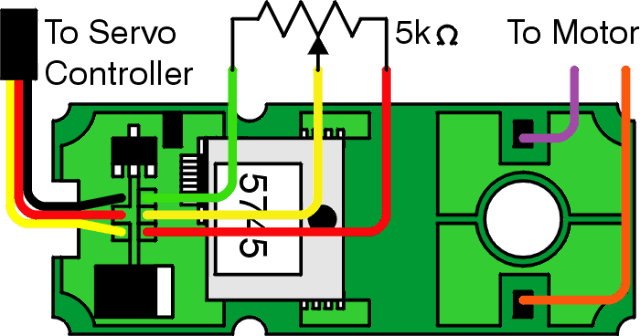
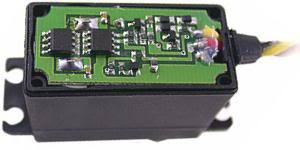
This servo has a potentiometer,motor and servo amp.I need this amp or a very basic one at the least.This is what I am trying to achieve in building the sail-winch :
I don’t understand the point of your last post. Do you still have any questions?
- Jan
Jan,
What part of “I am building a custom sail-winch servo” that you do not understand?Do you see the old sail-winch photos of the winch that I am upgrading? The entire sail-winch is the servo.The end of the potentiometer has the double winch arm attached to it(not in photo) for pulling in the sail sheets(Dacron string).Can you see the servo amplifier in the photo? I need this in a digital servo amp board.
Regards,
John
I completely understood “I am building a custom sail-winch servo”, and I directed you to the relevant products in my first reply. What I do not understand is the point of your previous post, in which you repeat some of your earlier info without any acknowledgement of my suggestion or my answer to your question, “Why should I use the model that you suggest?” You then posted a picture of the Torxis servo with the jrk inside; again, I do not know why you did that or if you are asking a question.
Did you look at any of the jrk documentation? Do you understand what it does?
- Jan

